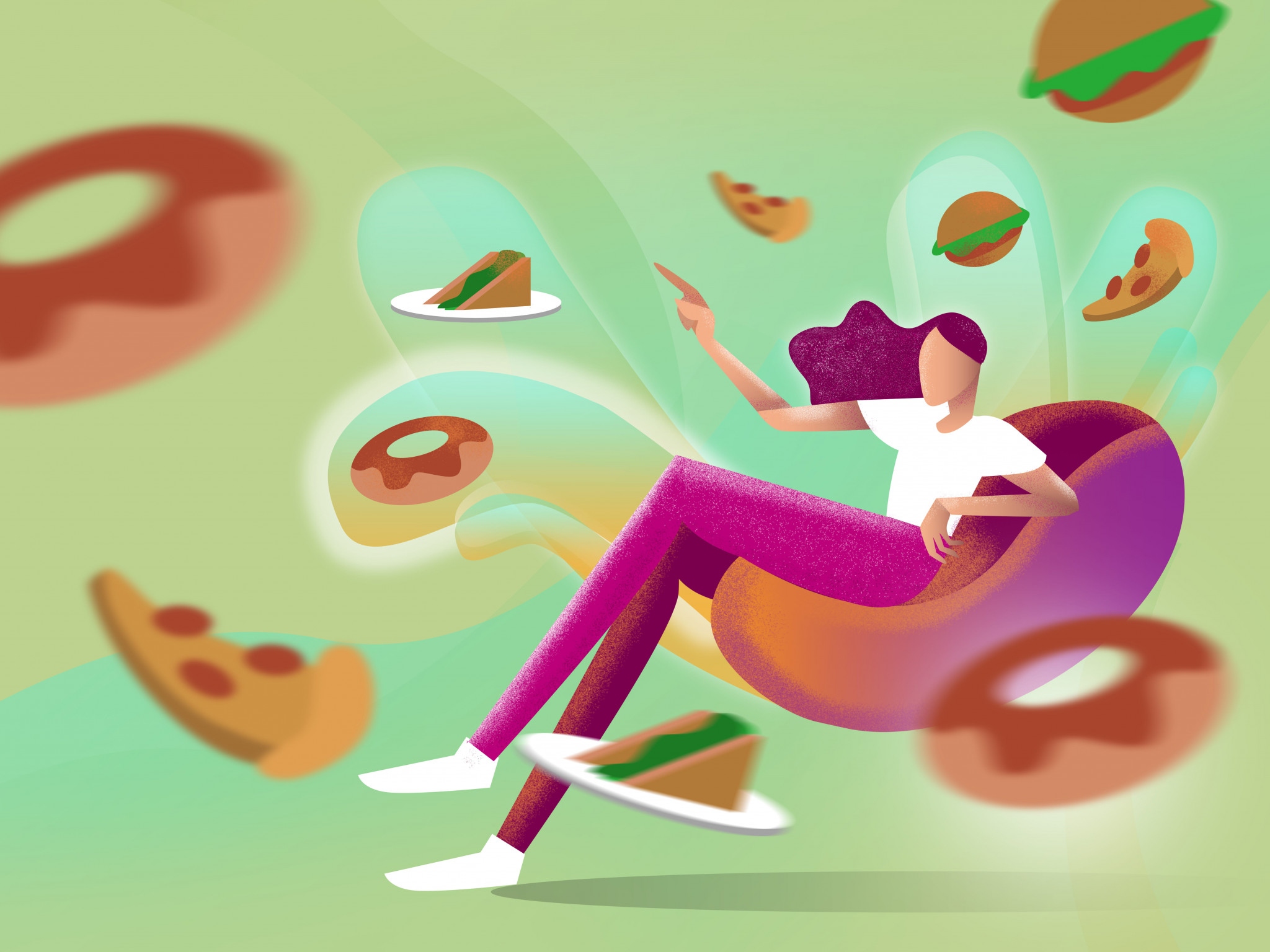The food delivery business seems to be promising for startup owners and entrepreneurs, as evidenced by the success of popular companies like Uber Eats or Grubhub. From the customer’s perspective, the benefits of using a food delivery app are evident: it’s fast, it requires less human interaction (yay, introverts!), it asks for little distraction from whatever you’re currently doing, it allows you to have a meal in the comfort of your own bed even.
But why build one? What’s in it for you? Well, the food delivery apps business is increasingly gaining momentum from an economic perspective. According to eMarketer research, by 2023 up to 23% of US smartphones will use some of the apps for delivery food. That’s about 60 million people – a huge market chunk! If you are in the food business you can benefit from adding up some delivery services to increase sales.
Here are some factors to keep in mind before diving into this endeavor. This article will help you make a successful application and increase revenue.
Contents:
Food delivery business specifics
There are 2 business models: a restaurant to a customer (where a customer browses through the menus, makes a choice and deliveries are performed by a restaurant) and a platform to a consumer (the main difference there is that deliveries are made by the application). Which one to choose depends on your aims as an entrepreneur and whether you already have an establishment and a delivery service.
You’ll need to make several products: an application for customers, for restaurants, and for couriers each to satisfy everyone’s needs.
First of all, it’s clear that your customers will use a client application. Basically, they need to find what they will eat, where they can order it and at what price. So it’s important to supply them with a flexible and fast searching feature. After choosing a meal their next step would be to place an order and make a payment. Make the whole process go smoothly.
On the other hand, you yourself will require an admin panel to manage orders, edit information, set prices, manage customer and courier bases.
And finally, you’ll need a version for couriers where they would check the list of available orders, see information about package size, pick up and drop location, and book an order.

The popularity of apps for delivery food from Giphy.com
Useful points to keep in mind before building a food delivery app
The most downloadable food delivery apps in the USA
As per SensorTower, the list of the best apps for food delivery includes DoorDash, Uber Eats, Yelp, Postmates, and Grubhub. You might want to check them out just to see how they work. Notice that Grubhub has a varying delivery fee depending on the individual restaurant, DoorDash delivers alcoholic beverages, Postmates has an Unlimited feature with which for $9.99 a month, you can get a $0 delivery fee on all orders over $20. Add flexible search, save delivery location and order history, it’d be appreciated.
Concerning the geographical distribution, here’s a very detailed table on what food delivery services are the most popular in major US cities. You may notice that New York, Chicago, and Philadelphia stand for Grubhub whereas the dominant food delivery service in Los Angeles is Postmates, while DoorDash is very popular in San Jose and Fort Worth.

The food delivery apps in the USA by sensortower.com
Price comparison review
It is critical to know your budget. The cost of building a food delivery app depends on many aspects including your requirements, experience of a development team and its location, platforms, and other technical details. You should also be aware of project management and testing costs.
The hourly rate of developers is largely determined by the country they work in ranging from $10-50 per hour in Asia and Africa to $50-100 per hour in the USA, Canada, Western Europe, and Australia. Let’s take Eastern Europe as an example. It stands somewhere in the middle regarding an hourly rate and provides developers with excellent skills.
Basically, a food delivery app takes approximately 500-850 hours to make so with an average hourly rate of about $40 the total cost would be around $20,000-$34,000. Note, that this is a very rough estimate. If you have an idea, contact us and we will make a more precise estimate for you.
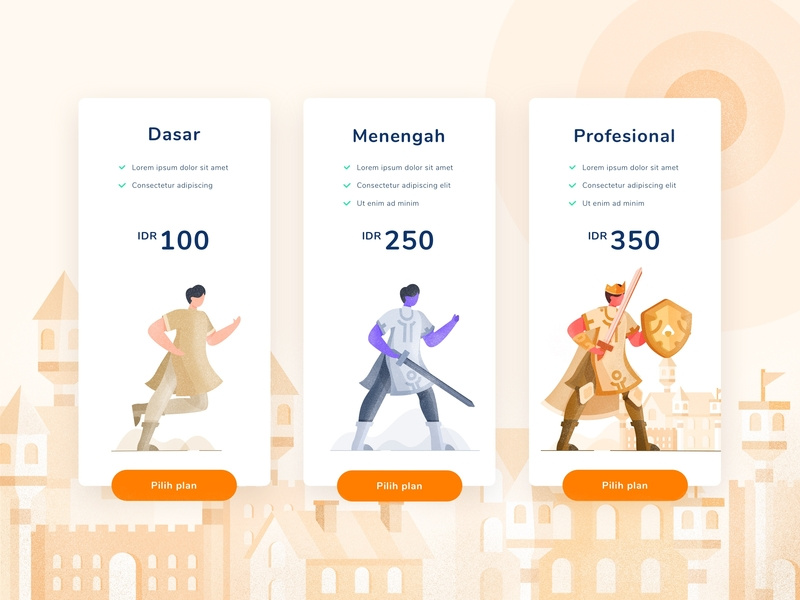
Pricing page by Randompopsycle
Decide on technical details
You have to decide whether your app would be a hybrid or a native one just for iOS or Android. Which one to select depends on factors like cost, time, quality, the technology your target audience use, etc. Remember that native apps are more scalable, secure, fast, user-friendly than hybrid ones, but the combined cost for making them is greater.
Essentially, when hiring a development team it’s best to ensure that they give you a full range of services. Digital agencies provide it all – identity design and branding, UI, development, and support after launching.
Speaking of platforms, there seems to be a gap between the median incomes of iPhone and Android users with the median iPhone app user earning 40% more than the median Android user. Moreover, iOS continues to dominate Android in the USA.
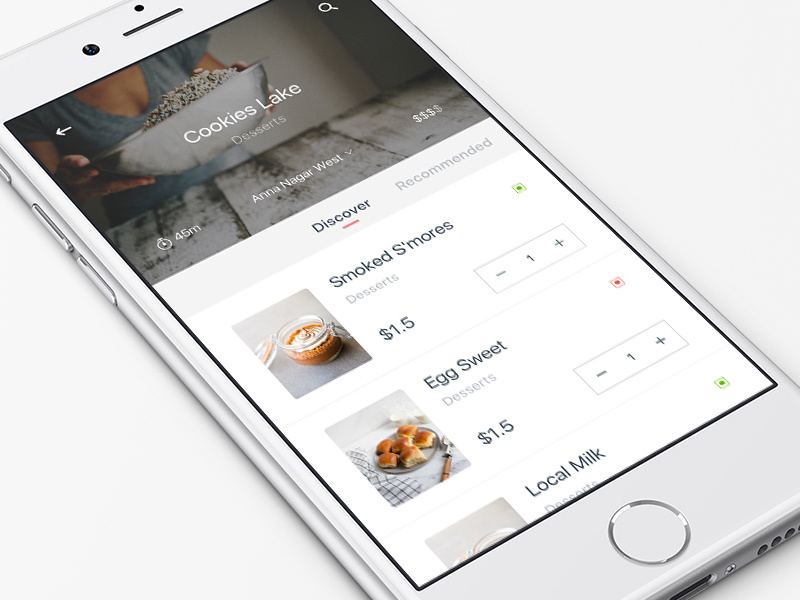
Food delivery app by Vivek Ravin
The biggest challenges
Unhappy customers. For instance, in 2016 Postmates faced an issue of hundreds of people complaining about prices in the app not agreeing with the actual prices on delivery.
Nowadays, we have a lot of concerns connected to data security. DoorDash confirmed that its 4.9 million customers, delivery workers, and merchants had their information stolen by hackers.
Mainly, people complain about slow delivery (there’s a reason why Uber Eats gives its clients vouchers for free food if the meal is late); cold food, incorrect orders, restaurants ignoring their instructions.
Unhappy restaurants. Some restaurant owners are discontent with the way the delivery services represent their brands. Outdated menus, wrong prices, poorly handled food, you name it. And as if that wasn’t enough, there were even cases like unauthorized delivery service!
Unhappy couriers. Andy Newman, working as a courier for several delivery apps in reporting for The New York Times, found he was making under $10 per hour. And this job is a grind.
I was wondering why my account was suspended from postmates then saw someone tried to legit hack it and buy 200 dollars worth of smoothies????? luckily the charge didnt go through
— ✨Alfred Coleman III✨ (@PaperBoxHouse) August 21, 2019
Millennials vs older generations
Make thorough research beforehand on what your target audience is – their age, nationality, lifestyle, income, and where they live. Your whole business strategy depends on it.
For example, millennials (that is, people ranging in age between late teens and early 30s) are actively reshaping the food industry as we know it. They are 3 times likelier to order take-in food than their parents, simply because of the desire to protect their time and make life easier. Apps for delivery food are among the top 40 downloaded apps, and it’s possible that in 10 years the majority of the meals we cook at home will be instead ordered online.
ME [getting delivery for the third time this week]: order for Dana?
FOOD DELIVERY GUY: oh, no worries, I remember you!
ME: pic.twitter.com/7lrwEA8kvx— Dana Schwartz (@DanaSchwartzzz) September 27, 2019
It’s crucial to be unique
A challenge to build a food delivery app may seem tough, as you will find yourself in competition with the leading players like Grubhub, Uber Eats, or DoorDash, as they obviously have more resources than a small business. But at the same time, if you have decided to plunge into this field, then you must be having some unique proposition to distinguish your product from the rest. Can’t think of anything? Here are just a few suggestions:
- forego a delivery fee or order minimum.
- provide additional services – don’t limit yourself to food only – you can offer to deliver anything from beverages (including alcoholic ones) to gifts and even laundry.
- allow making a reservation for a sit-down meal or a pick-up order.
- provide 24/7 service – that’s a great competitive advantage.
- think of a non-profit idea to add a nice touch to your brand image. For example, with every order, Munchery donates a free meal to a person in need. What about something similar?
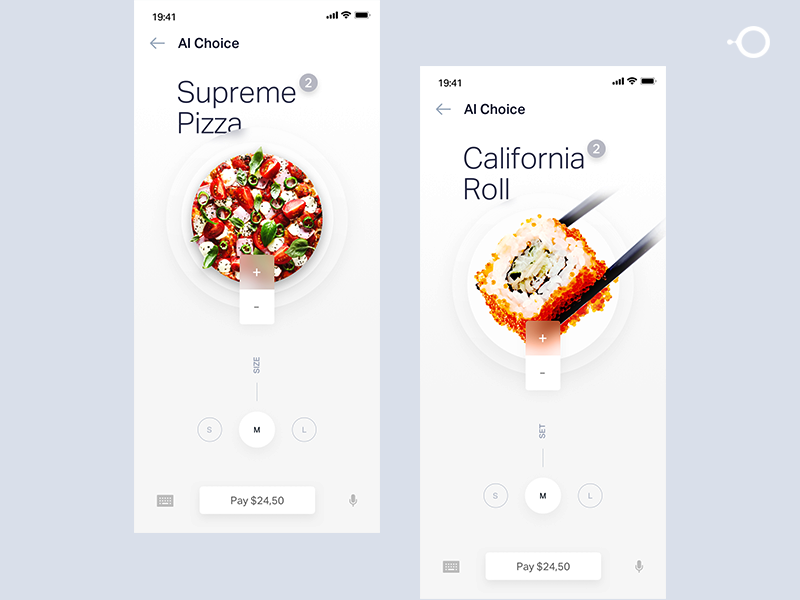
Pizza order UI design by Gleb Kuznetsov
Features to include in a profitable food delivery app
Once you’ve decided on the important points mentioned above, you can determine what features to add to your app. Here’s what would be really effective.
Informative content
Any app is nothing without useful content. Offer a wide array of restaurants, cuisines, and dishes so that people would have a reason to use it. Customers should be able to browse all the restaurants near them or just specifically order their Basil Delight or whatever. A nice idea is to add a wish list so that people would remember what meal they wanted to try next.
And make sure that every item on your app has a picture. A mouth-watering picture to spur the people on and show them exactly what to expect. You’d be surprised how many apps ignore this simple thing.

Food delivery app by Jakub Wojnar-Płeszka
Fast and simple UI
It’s absolutely vital to give customers an easy to use interface with clean and simple functionality and intuitive feel where the desired meal is just a few taps on the screen away.
Look at the simple and user-friendly layout in the example below. A user can order food easily in a few steps. Tempting food images generate the feeling of hunger, and a good color combination is eye-catching and attractive.
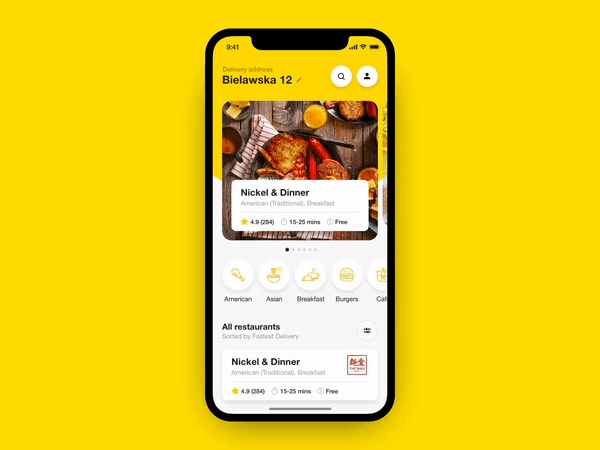
Food delivery app layout by Eugene Olefir
Secure payments
One of the reasons why people convert to delivery apps instead of a tedious process of making a phone order is the opportunity to keep their personal data secure. So it’s your job to make every payment operation quick and safe.
According to Statista, in just four years, worldwide mobile-payment revenues rose from $450 billion in 2015 to more than $1 trillion in 2019.
Try to incorporate as many payment options as possible. People in the USA prefer to pay using: credit/debit cards (2Checkout, Braintree, Simplify Commerce, Stripe, Authorize.Net, WorldPay, SagePay, Optimal Payments) or PayPal.
All in all, most payment processors are quite similar in terms of features. PayPal, Stripe, and Braintree charge about 2.9%+30 cents for every successful transmission and offer split purchase transactions, reporting tools, simple invoicing and payment procedures.
It can be noted, that developers especially prefer Braintree, for it supports six programming languages and takes the shortest time to integrate.
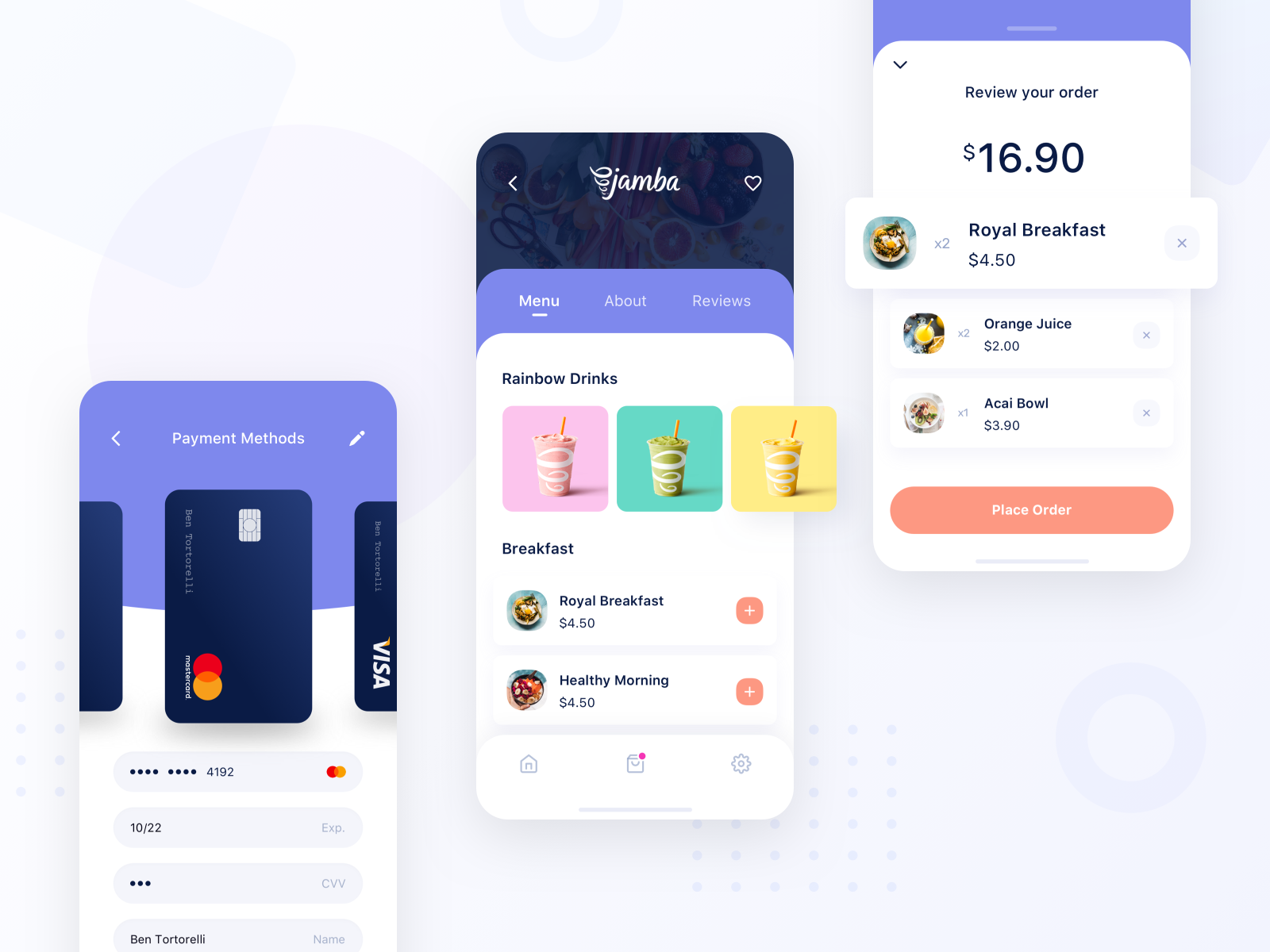
Food delivery app by Ben Tortorelli
Real-time order tracking
This feature is the best. It’s very convenient to see exactly where your meal is and when it is coming and organize your activities accordingly. Implement a GPS tracking system in your app to make it really advanced. And delivery personnel, in turn, will be grateful for getting better driving directions and an ability to estimate the time needed for the delivery.
For example, in order to track a meal using the DoorDash app, you just have to go to the “Orders” tab and tap on your order to see its status. Once a driver has agreed to deliver your order, a map will appear showing their location.
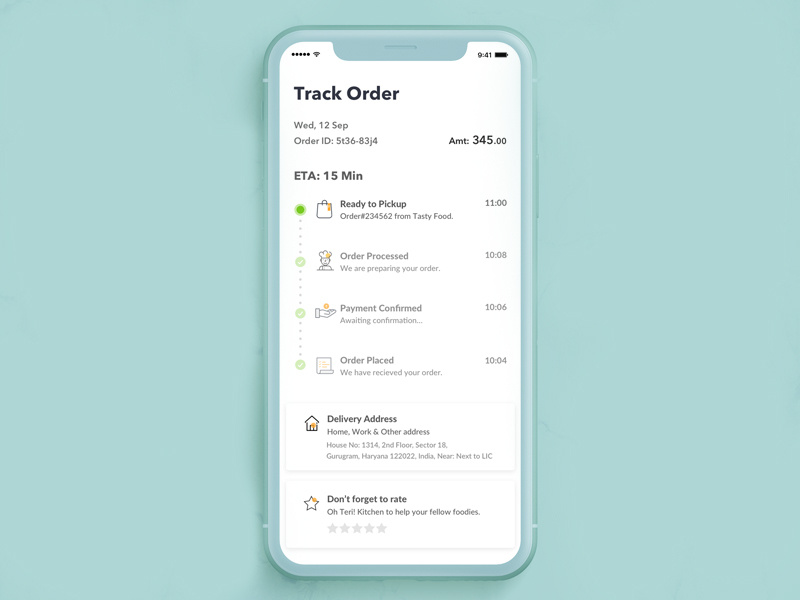
Track Order – Food & Shipment by Atul Kaushal
Customer care
Without a doubt, people love discounts and special offers. I think it wouldn’t be a shock for you if I told you that many people use this or that particular food delivery app because of the coupons they get for previous orders, for delivery personnel screwing up in one way or another or simply as gifts. Exclusive in-app discounts is a great way to maintain customer loyalty and get new clients.
Give them special deals, make them earn points to spend on their next meals.

Redeem Coupon by Alex Bielovich
Push notifications
Speaking of special offers, it’d be a good idea to add a push notification feature to your app to keep clients engaged and give information about their order status. That’ll show them that you care.

Notifications by Aleksei Kipin
Recommendations
We live in the recommendation engines era. I don’t know about you but I personally am very happy with various recommendations that I get from Spotify or Netflix, not to mention clothing stores like H&M where they provide you with a blessed “Style with” section to help you pick some matching sweater for your skirt. It’s simple, it’s helpful, it saves a lot of time. So wouldn’t it be great if you could give your customers an opportunity to flow with your recommendations and choose something absolutely new and interesting? It might even be a dish they never tried before!

Interactive restaurant recommendations app by SELECTO
Filter system
Many people use food delivery services only for some particular kind of food. So if you offer a variety of different meals, include as well a complex filter system and make it so people could sort by restaurant name and location, cuisine, diet, food category, etc. Allow them to choose among new or trendy offers or propositions with free delivery. That way users will take less time finding what they need.
For instance, if your client wants to have something Japanese, for a medium price and with delivery time under 30 minutes, give them that. And what about something more complex? Add to this query the availability of customer feedback and soybeans as a meal ingredient. Voila! Perfect.

Filters in a food delivery app by Julia
Visual appeal
A good design conveys the idea of a product. Try to ensure that your app design communicates the pleasure sensation of tasting a well-made meal. Make people enjoy the design of your app like they would enjoy a spicy burger or a tongue-tingling fizzy soda. Yummy!
Use the combination of white or black with bright warm colors, attractive pictures and illustrations, add hidden sidebars, buttons, and elements.
Make it crisp, delicious and fine.
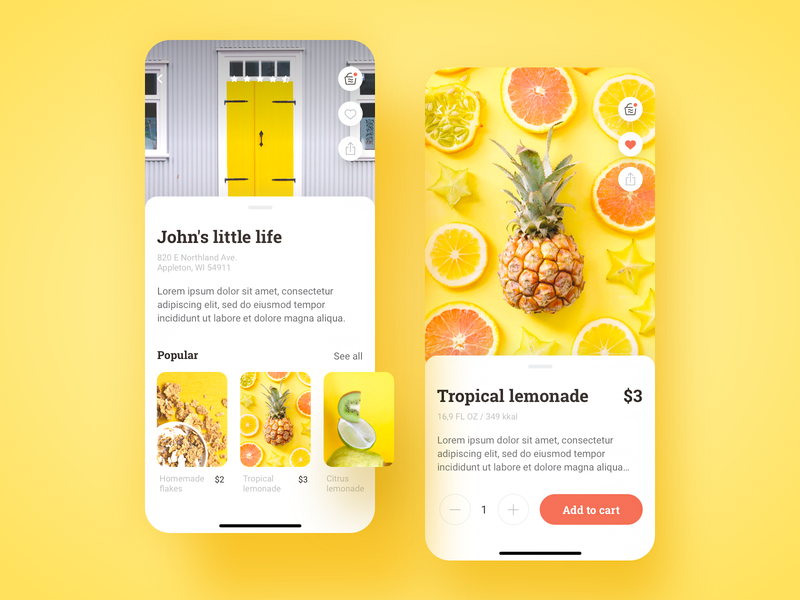
Food Delivery Mobile App by CATPOWER
Reviews, ratings, and feedback
People love to sort everything by rating and scan comments as the word of mouth is still one of the most trustworthy sources of information. Why else do you think some people pay for fake reviews. And imagine yourself in front of the overwhelming choice of the meals you can order. What would you do? I don’t know, I’d probably sort them by popularity and check what propositions are the most popular.
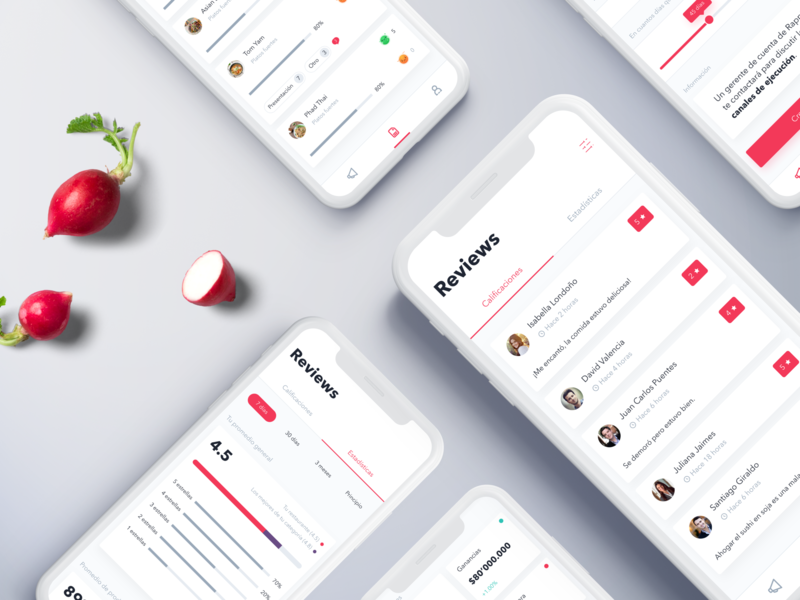
Restaurant Reviews App by Leonardo Posada
To wrap it all up
If you’re thinking about starting a food delivery app business, then now is the time. Food delivery apps are skyrocketing but the market is still far from being saturated.
According to McKinsey, the food-delivery market is growing and has a great potential for the future. And it’s totally understandable.
I have a friend who dreams about a future where it is enough to take a little pill called “Chicken Salad” or “Baked Beans” and instantly feel full and free of care for the next few hours. But the thing is, in contrast to my friend, for the majority of people eating is not just a way to sustain themselves but one of the main pleasures in life, as well as an opportunity to spend quality time with friends and family. If you wonder how to create a food delivery app, why not bring this pleasure to your potential customers and do it together? Send us a message and we’ll help you realize your idea.
